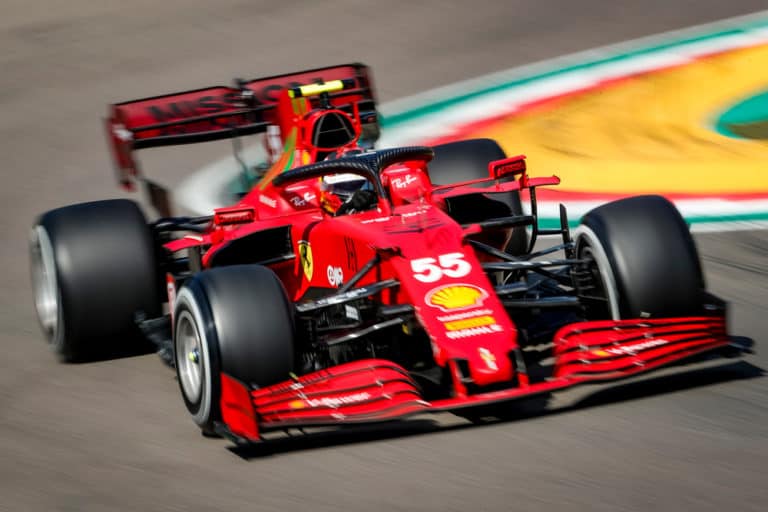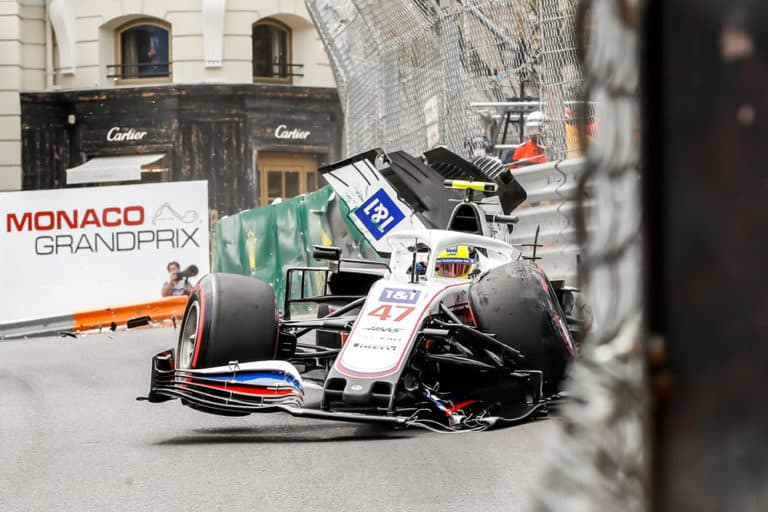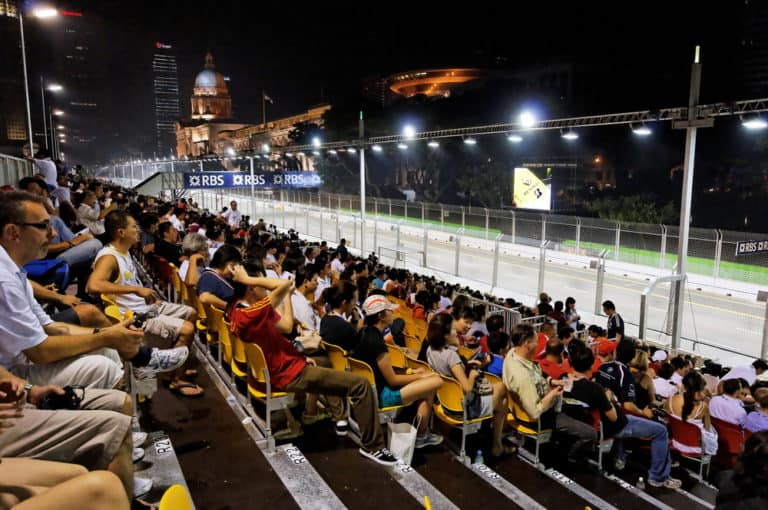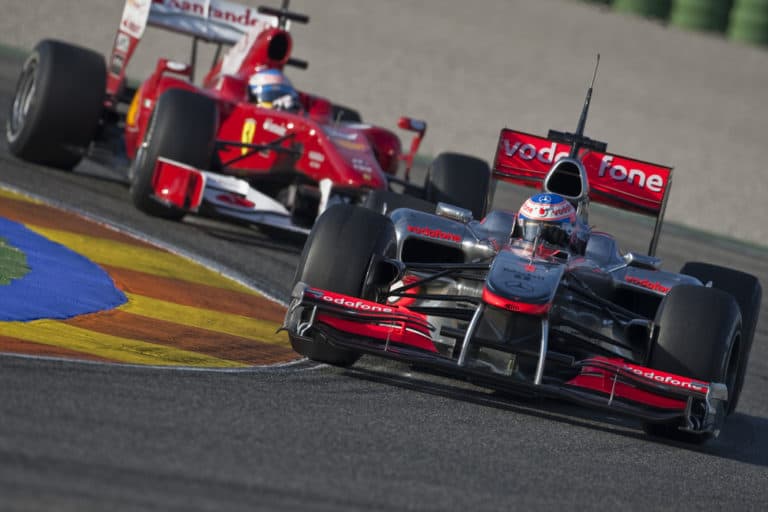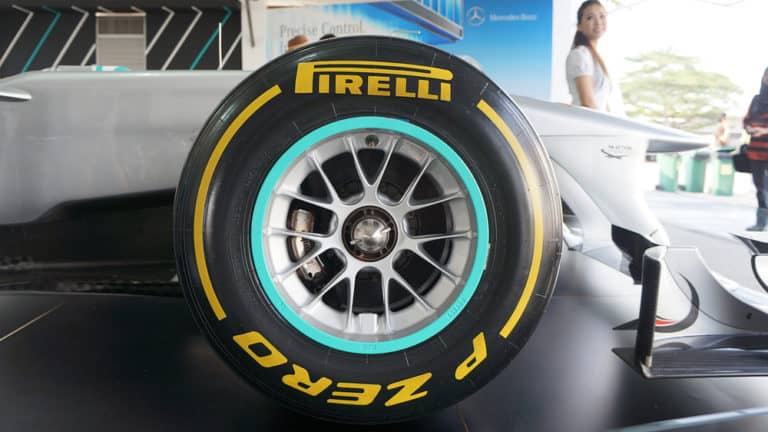Editorial credit: motorsports Photographer / Shutterstock.com
The teams that compete in F1 are some of the most successful and well-funded in motorsports, with many of them backed by major manufacturers and corporations. However, not all F1 teams perform equally, and some are called backmarkers, but what does this mean?
In Formula 1, the term “backmarker” refers to teams and drivers who are usually lower in the standings, with less funding and resources than their front-running counterparts. Despite this, backmarker teams are essential to racing and the category, offering seats to rookie drivers.
In F1, there are three battles: the one between the dominant teams to win the championship, the one between the middle of the pack to be the best of the rest, and the one between the backmarkers to avoid being last. Today we will see all about backmarkers. You will learn things that will surprise you!
What Does Backmarker Mean In F1?
Formula 1 is a prestigious spectacle in which the world’s best drivers and teams compete in some of the most luxurious venues in the world. However, as in all sports, all that glitters is not gold; there are winners and losers, successes and failures, and fame and oblivion.
Teams consistently at the back of the grid are referred to as backmarkers. This can happen for various reasons, such as lack of financial resources, lack of technology, lack of experienced drivers, or problems with their cars during the race.
Backmarker teams are not usually competitive and struggle to score; they tend to have smaller budgets than the top teams and have fewer resources to develop their cars, as opposed to big manufacturers like Ferrari or Mercedes, which have almost unlimited resources and are therefore more likely to build faster cars.
The different resources of each team and the way they are managed mean that each team performs differently. Therefore, their differences can be considerable, with even several seconds per lap between the fastest and slowest teams.
Why Are Slower Teams In F1 Blue Flagged?
If you have ever watched a Formula 1 race, you will have noticed that the slowest drivers, i.e., those who occupy the last places in the race, are shown blue flags.
Blue flags inform drivers that they are being lapped by faster cars and should move out of the way to allow them to pass. The slower teams cannot keep the same pace as the competitive teams, which in the races, they get a significant advantage, so they end up lapping them.
They are shown blue flags to avoid chaos and accidents and not hinder the race for the fastest cars. It is a system that is constantly used and works exceptionally well. However, there are times when the fastest drivers complain that the backmarkers have wasted their time or have not moved out of the way when they should since they are also in their own race, fighting with other drivers.
F1 Cost Cap: What It Is And How Does It Work?
The gap between the fastest and slowest teams has widened in recent years. The smaller teams lag far behind the big teams, which have huge budgets, great financial capacity, and resources, making it almost impossible to catch up quickly.
Because of this, the FIA planned to introduce a cost cap in 2021 to limit the amount a team can spend on its cars over a given calendar year. The original plan consisted of a $175 million annual limit, which was reduced to $145 million following the Covid-19 pandemic, which put some teams in severe financial straits.
Thus, it is planned that each year the amount will be reduced by $5 million, thus equalizing the budget of the richest and the humblest teams and reducing the differences in performance on the circuit, as well as offering an image of greater sustainability and savings that F1 so much seeks.
The cost cap includes all the parts of the car, all the elements necessary to run the car, most of the team personnel, garage equipment, spares, and transportation costs. On the other hand, the salaries of drivers and the highest-paid staff members, travel costs, marketing expenses, and all legal and non-F1 activity payments are not included.
Why Do Backmarkers Continue To Race In F1?
Many may ask, why are the losing teams still in Formula 1 if, weekend after weekend, they are turning laps only to finish at the bottom? Well, there are many reasons to stay in Formula 1. Most backmarkers hope to eventually make progress by attracting a major sponsor, changing the rules that favor them, or improving season after season, getting closer and closer to the fastest teams.
In the end, the passion for the sport and improvement makes each member of the team give their all to continue, despite the inconveniences, working thousands of hours and expending a lot of energy for that purpose and make an impact in the category, something that is not seen from television.
Not all backmarker teams remain backmarkers forever. Some examples of teams, such as Force India, started from the bottom and gradually became solid midfield teams or even winners, so the hope is not lost.
Likewise, there are competitive and storied teams that have good times and bad times, having been both at the top of the grid and at the bottom, and when they find themselves in bad years, they hope that it is only a matter of time before they are at the top again.
After all, Formula 1 is the pinnacle of motorsport, and even if they are the last teams on the grid, they are still part of the elite, which gives excellent prestige and exposure.
The Importance Of Backmarkers In Formula 1
Backmarkers are very important for Formula 1. The humbler and slower teams are a perfect opportunity for rookie drivers, those promising drivers who have succeeded in the lower categories and are looking for a seat.
The big teams do not dare to bet on rookie drivers, as they can afford to buy drivers with a great experience and reputation, who are the safe bet and guaranteed to achieve good results.
New drivers do not demand as much salary so that the smaller teams can sign them. It’s a win-win partnership. The small teams can sign drivers at a low price, and the drivers get experience in Formula 1, where they can make a name for themselves and attract the attention of the big teams.
Drivers such as Fernando Alonso, George Russell, Michael Schumacher, Charles Leclerc or Rubens Barrichello started their careers in backmarker teams, and through gaining experience with them and having good performances, they signed for bigger teams, where they eventually could fight for podiums and victories.
In the same way, backmarker teams are also crucial for Formula 1, as sometimes, having nothing to lose, they try creative innovations on their cars, which can be a failure or a success. In the latter case, they can inspire other teams and thus, in a way, evolve the category.
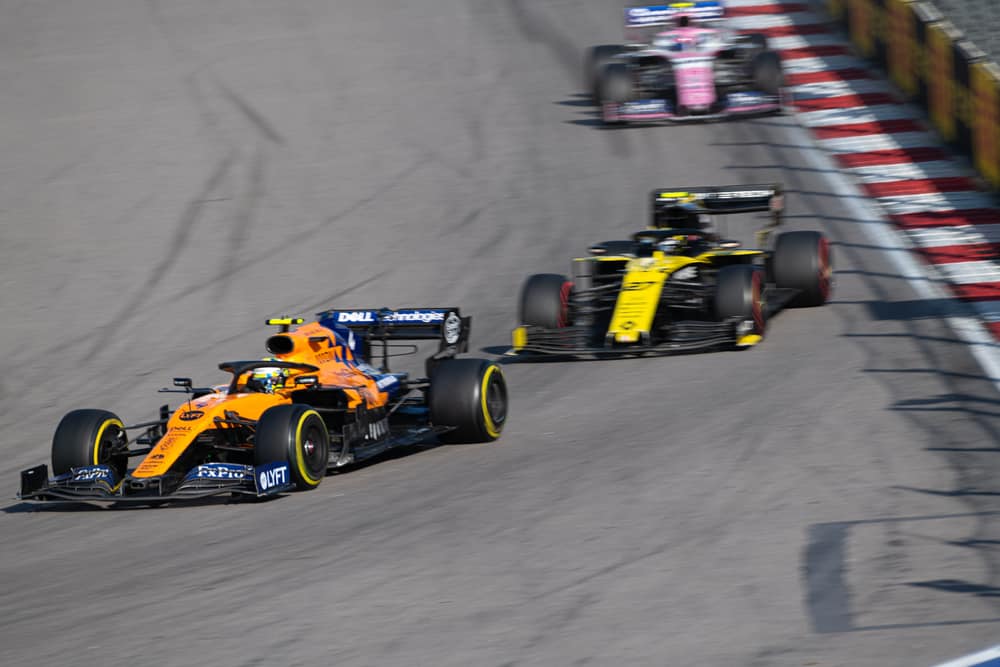
Which Teams On the Current Grid Are Backmarkers?
During the 2022 season, one team has stood out above the rest for its poor performance. That has been Williams. The British team only scored 8 points, far behind the 35 of AlphaTauri and 37 of Haas.
Williams has been in crisis for some time. Frank Williams’ historic team, successful in the ’80s and ’90s, has been at the back of the grid for years, swapping with Haas for the last position on the constructors’ standings.
Williams started the hybrid era very strong, consistently scoring podiums, but gradually declined while losing sponsors, until hitting rock bottom in 2020, when they scored zero points. The Haas team, which joined Formula 1 in 2016, has experienced something similar, initially having some good competitive years but declining until the end of the grid.
In 2021, the backmarkers of the grid were Williams, who scored 23 points after improving last year; Alfa Romeo, with 13 points; and Haas, who scored no points. For 2022, however, Alfa Romeo and Haas have improved significantly, scoring 55 and 37 points, respectively, being teams in the tight midfield and leaving Williams far behind.
Notable Backmarker Teams In F1 History
Minardi
Despite its few successes, Minardi became one of the most beloved Formula 1 teams by the fans. The Italian team endured 20 years in the category, from 1985 to 2005, always at the back of the grid, perhaps the longest-lasting backmarker in F1.
Minardi contested 340 Grand Prix in Formula 1, scoring only 38 points in all those years and being the ideal team for young drivers reaching the top of motorsport. Fernando Alonso, Mark Webber, Anthony Davidson, and Jarno Trulli are some of the drivers who drove for Minardi.
The Italian team, which never had a big budget, endured in Formula 1 like no other team, always in search of sponsors. It had to be rescued several times, until finally, at the end of 2005, it was bought by Red Bull, which transformed it into its second team, Toro Rosso (today AlphaTauri).
Jordan
The Jordan team was in Formula 1 from 1991 to 2005 and was not always a backmarker, as its performance varied. After a difficult first few seasons at the back of the grid, Eddie Jordan’s team established itself as a strong midfield team from 1994 onwards, scoring consistent points and even achieving occasional podium finishes.
In 1998 came its first victory, in the Belgian GP by Damon Hill, and 1999 was the team’s best season, which, with 2 victories and 6 podiums by Heinz-Harald Frentzen, finished third in the constructor’s championship.
Despite a last victory in 2003 by Giancarlo Fisichella and a podium in 2005 by Tiago Monteiro, the team went in decline from 2001 onwards, each time with less competitive cars, until finally returning to the back of the grid in 2003, 2004, and 2005. It was subsequently acquired by the Midland Group, which kept the team for one year, and after that, it became Force India.
HRT
Hispania Racing Team, HRT, was the first Spanish team to race in Formula 1 in 2010; founded by former driver Adrián Campos and characterized from the beginning by having a very limited budget, always looking for potential investors and financing.
HRT lasted only three seasons in Formula 1, which it spent at the back of the grid, only being able to compete with the other two teams that also debuted in the category in 2010, Virgin (then Marussia) and Lotus (then Caterham), both of which were merely surviving.
The team could not implement the KERS system in its cars, which were so slow that they failed to qualify for the 2011 and 2012 Australian Grand Prix, which used to happen in the 1970s and 1980s but not at that time. So, finally, after the lack of buyers, the team was disbanded at the end of 2012 without scoring any points in Formula 1.
It was the first of the teams that debuted in 2010 to be disbanded. On the other hand, Caterham held out until 2014, and Marussia until 2016.
Conclusion
In Formula 1, backmarkers are those teams and drivers who occupy the last positions on the grid, either due to a lack of resources and technology, not having built a good car, or a lack of experience of their drivers.
Backmarkers are an essential part of the sport, whose determination and drive to improve and catch up with the fastest teams push the category to constant improvement and innovation, characterized by competitive spirit.

